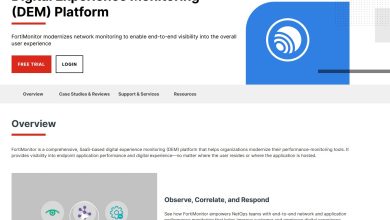
Technological advancements are taking over the evolution of businesses. Workforce management is among the technology solutions companies are adopting to ensure a smooth-running of business processes. It is specifically designed to curb workforce inefficiencies, among other things.
Workforce Management Software
Workforce management software has increasingly become a sought-after tool as it helps entrepreneurs assess their business processes better and come up with strategies that maximize the efficiency of their workforce. It also helps in the automation and maximizing the business functions.
For instance, the time clock software helps a company assess the clock times and attendance of employees. It also helps in the management of time-off requests for employees.
These are only a few of the perks of workforce management. To further help businesses leverage such benefits, we will look at other reasons why companies should prioritize workforce management.
Let us delve into specifics.
-
Reduces Expenses
Workforce management software helps control labor costs which bring down expenses. It does this in a couple of ways.
Allow me to expound.
Workforce management software gives a company insight into their staffing needs. A company with many employees who work for 40 hours a week may need to consider if they can still achieve the same productivity and efficiency levels if some employees worked fewer hours. If so, cutting down the employees’ hours of work significantly brings down labor costs.
Additionally, the workforce management software allows a company to understand whether it is incurring unnecessary expenses due to understaffing or overstaffing. A lack of adequate employees is detrimental to the company finances as employees claim overtime that may quickly add up to unimaginable levels.
Overstaffing is also an unnecessary financial burden to a company. With an over-supply of the workforce, companies are mostly wasting money that can be used for other productive company processes. With workforce management software, a company can better assess these factors, taking appropriate cost-saving actions.
-
Increases productivity
Every business owner realizes that productivity has a direct positive impact on profitability. Traditional time and attendance cards and systems do not provide adequate tracking of employee productivity.
Biometrics, for instance, streamlines the clocking in and out of employees. With this kind of system, companies do not need to spend considerable time reconciling paper timesheets. As such, have more time to work on other urgent tasks, increasing productivity levels.
Workforce management software also comes with a vast array of benefits for the Human Resource department. HR managers can assign the right employees to the right tasks, which goes a long way in improving workplace productivity.
-
Eliminates time theft
Time theft is a common evil with employees. Traditional clocking systems have faults where employees can have their colleagues clock in on their behalf, skipping part or the entire shift altogether. Taking extended breaks or undertaking personal tasks during working hours are all forms of time theft that some employees are guilty of.
Time theft is detrimental to company productivity. Apart from being paid for not working, time-theft demotivates other employees. When a hard-working employee notices that their colleagues are engaging in time-theft, not working as hard and probably getting paid even more than they are, they become demotivated. In the end, it creates a ripple effect making low performance a new workplace normal.
By investing in workforce management software, companies can track their employees’ shifts and working times. The software allows companies to allocate each employee with a unique account and login information that minimizes the chances of asking their colleagues to clock in on their behalf.
-
Allows automation
We are in a digital era when automation is one of the major company processes. Workforce management software allows the management to automate the various processes, saving them extra time.
Scenarios where managers must monitor the time employees clock in and out, their attendance, and overall working hours are stressful. Manually calculating and monitoring these tasks is also time-consuming. However, by investing in workforce automation software, a company’s management can automate these processes to ensure efficiency. Besides, it is used to handle humdrum administrative tasks.
In general, these automation solutions reduce operational costs, increase productivity, reliability, and performance.
-
Saves time
Time is a valuable resource in any company. With proper time management, businesses can increase efficiency and minimize work-related stresses.
A company’s management defines the schedule of work tasks and the sequence of activities to do. They will also estimate the time and resources needed to conduct such activities. Above all, they need to monitor and control these schedules to ensure success. In this case, investing in workforce management software is the best way the HR department can handle such tasks faster. They do not have to spend several hours every week preparing work schedules as the software does these tasks.
-
Minimizes the risks of Payroll Errors
Creating payrolls manually is time-consuming, and the whole process susceptible to errors. Manual calculations may lead to misclassification of employees, miscalculations of overtime, improper tax calculations, and missed deadlines. Additionally, improperly handling levies and data entry errors are some of the issues you might experience when handling payroll calculations.
Workforce management software works to minimize these errors. Thanks to the automation feature, they can help streamline these processes, minimizing unnecessary expenses.
-
Improving customer satisfaction
Just like productivity levels, workforce management has a direct impact on customer satisfaction.
For starters, it helps a company develop a capable workforce. The software allows companies to identify and retain productive employees who can help customers achieve user satisfaction. Also, by identifying employees with a special skill set, employers can use the knowledge to assign appropriate tasks.
In a retail store setup, workforce management software allows a store to have adequate stock and display stock properly. That way, clients coming into the store can get everything they need easily, improving customer satisfaction.
From the points mentioned above, it is clear that workforce management software is a valuable tool to any business. Incorporating it into company processes increases productivity and efficiency.




